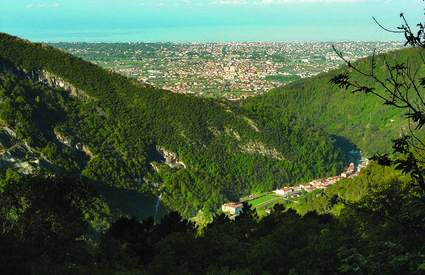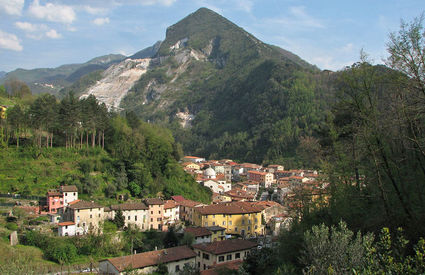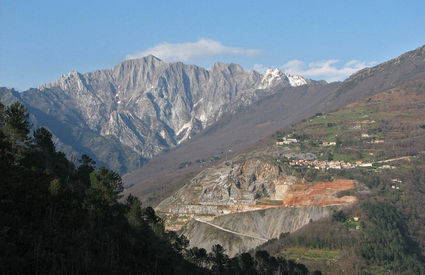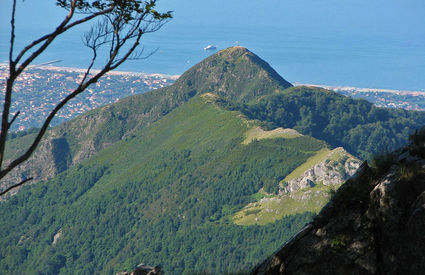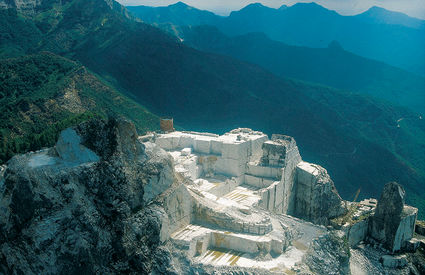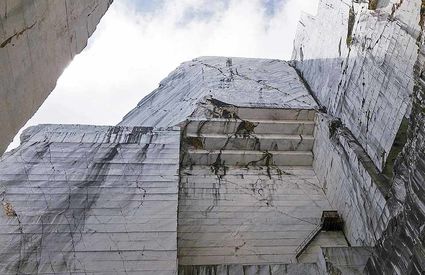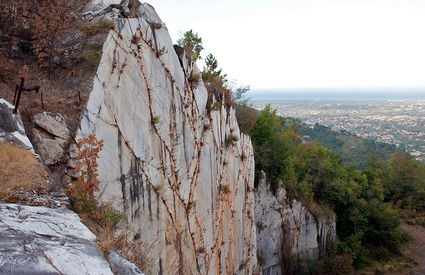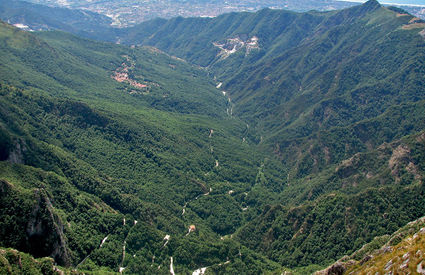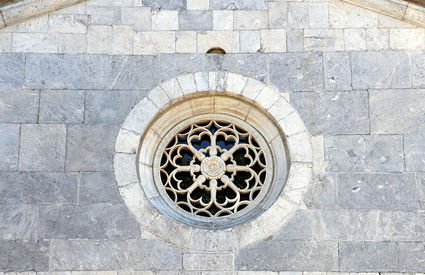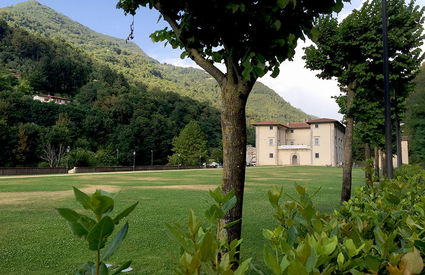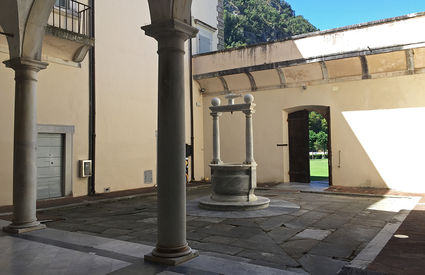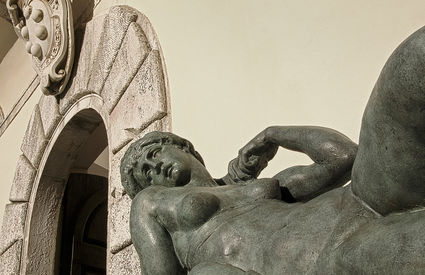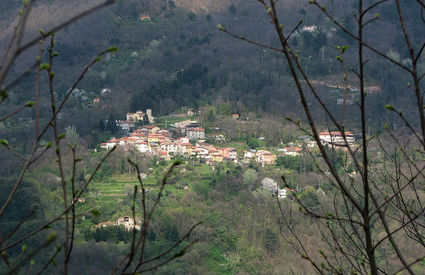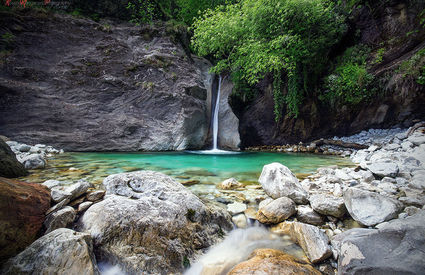Seravezza
The marble way of Michelangelo
Apuan gold, from the Etruscans to the Medici to today
The marble way of Michelangelo
Apuan gold, from the Etruscans to the Medici to today
A Florentine enclave between the sea and the mountains
Seravezza is at the heart of that enchanted part of Tuscany, which in 1513, according to the wishes of Giovanni de’ Medici, or Pope Leo X, removed itself from Lucca’s holdings for more than three centuries, becoming part of the glory of the Florentine State. The so-called Versilia Medicea, to which the communities of Pietrasanta, Forte dei Marmi and Stazzema also belong. A land of great charm that, from the beaches of the Tyrrhenian climb up to the peaks of the Apuan Alps, home to the treasure of natural, artistic and historical wonders.
Marble extraction. In the beginning there were the Etruscans
Marble
is a precious element, a hallmark of this land. The finding of numerous
gravestones in the Versilia and remains of the Rupe di Corvaia settlement
would lead us to think that the extraction of Seravezza’s marble quarries began
much earlier than in Carrara. The foundation of Luni in Roman
times and the opening of new marble basins north of Versilia caused excavation
to be suspended, although it resumed slowly after the year 1000 in the quarries
closest to the Via Francigena. Between the 1400s and 1500s Versilia’s marble quarries supplied
materials for the churches and palazzos of Pisa, Lucca and Genoa.
From quarries to the sea: Michelangelo's way
After having assigned Versilia to the Florentines, Giovanni de’ Medici ordered Michelangelo Buonarroti to use marble extracted from the mountains of Seravezza for the façade of the church of San Lorenzo in Florence and to build the road leading from the quarries to the sea. The enterprise was hampered with difficulties and took Michelangelo from 1518 to 1520 to achieve. The construction of the road underwent one delay after another and when the first marble finally reached Florence, in 1521, the plans for the façade had been abandoned.
Palazzo Mediceo, UNESCO World Heritage
Michelangelo’s efforts were not completely in vain, however, because he left that mountain-sea pass to the Versilia Medicea, now known as the Via di Michelangelo (Michelangelo’s Way), a cultural and historical road that unites and typifies the area. Located at a strategic point along the route is the beautiful palazzo that Cosimo I de’ Medici had built in the late 1600s. A solid yet elegant residence, it is one of the finest examples of Tuscan rural noble architecture of the time. On 23 June 2013 Palazzo Mediceo was recognized as a UNESCO World Heritage site as part of the “Serial site of Medici villas and gardens in Tuscany”. With the garden and the adjacent Grand Ducal Stables, the palace is a cultural hub for art events, exhibitions and performances, the focal point of the land worth visiting at any time of the year, perhaps while retracing Michelangelo’s steps, from the bright Tyrrhenian lidos to the Apuan Alps through the centuries-old olive groves on the plain and the foothills, the verdant valleys through which mountain streams trickle, the marble quarries and the villages that, like old fortress, watch over this land with its long and action-packed past.


